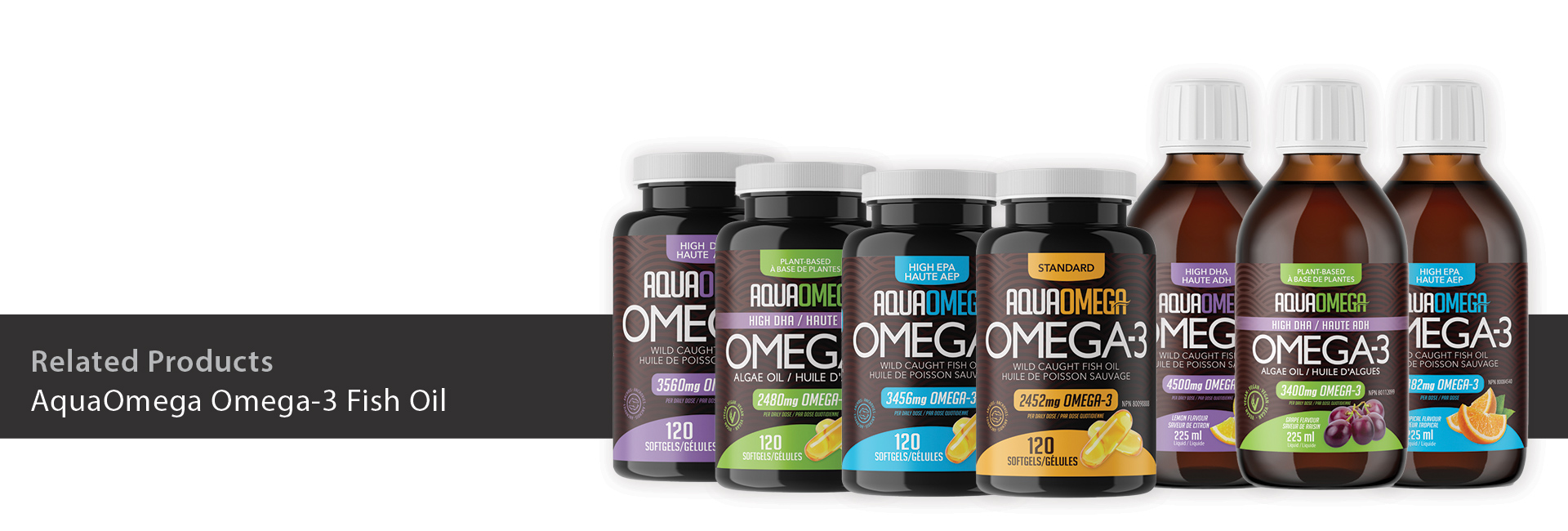

Tips for Supplementing with Omega-3s
In theory, we should obtain all the necessary nutrients to function properly as human beings from our diets. This is true in most cases for all essential nutrients. Unfortunately, things have changed drastically in both our diets and in our environments. We are faced with foods filled with artificial preservatives, colors, and dyes. We consume significantly more inflammatory foods high in Omega-6. Our busy lifestyles often leave us in a nutrient deficient state, which is why so many people turn to supplements, which is their entire purpose, to supplement our diets.
The fact remains, that if we genuinely choose to, we could manage to get all of the necessary nutrients safely from our diets. There is, however, one unique situation where supplementation will ultimately outweigh food. Keep in mind, there are some catches to this, in the sense that you need to be getting a quality supplement, with proper third-party testing to avoid environmental contaminants. This supplement needs to be in its natural form, and potent enough to offer a therapeutic dose.
If you haven’t guessed it yet, the supplement that is safer than the food it is sourced from is Omega-3s. First, let’s start by saying that less than 2% of North Americans consume the minimum required amounts of daily essential fatty acids.1
Secondly, it’s important to mention that more than 50% of fish being consumed globally today is farmed fish2. That is a problem. Farmed fish have diets that are extremely high in Omega-6,3 which changes their natural ratio of Omega-6 to Omega-3s. These farmed fish are also usually very unhealthy and are often given antibiotics to help prevent disease, and traces of these are often found at the level of consumption.4
The third issue that needs to be addressed is that it is no longer considered safe to consume fish more than once or twice per week.5 The increased levels of environmental contaminants like PCBs, Dioxins, Heavy Metals, Mercury, and most recently, microplastics.
Here’s exactly why this should be of concern. These contaminants are not water-soluble and therefore cannot be easily broken down in the body and flushed out. These contaminants build up in the fatty tissues in our bodies and can significantly impact our overall health. These contaminants, recognized as carcinogens, are known to promote inflammation in the body, weaken our immune systems, and have also been directly linked to fertility issues.6
DID YOU KNOW
When consuming fish, you are only consuming roughly 300 to 500mg of Omega-3s per 3oz portion of fish? That is so far from the minimum daily required intake.
What about those who focus on plant-based sources of Omega-3s like Flax or Chia seeds? Unfortunately, even the vegetarian options pose difficulties too. The main problem with omega-3s sourced from seeds, is that they are not in the form of the essential fatty acids EPA and DHA. Almost all plant-based Omega-3s, except algae, are in the form of ALA (alpha-linolenic acid)7.
What’s wrong with ALA?
Humans do not convert ALA efficiently into the essential fatty acids EPA and DHA.8 Men can only convert roughly 2 to 5 percent, and women can convert approximately 5 to 10 percent. The process of converting plant-based sources to essential fatty acids is unfortunately an inefficient way to get your Omega-3s, and in some cases, you still need to be aware of the possible environmental contaminants and heavy metals.
Why is Quality Supplement better than diet?
Well, let’s start by looking at how many Omega-3s you need to consume. A maintenance dose of Omega-3s will begin at roughly 2,500mgs of combined EPA and DHA a day. 2,500mg is the minimum amount of Omega-3s you should be consuming. There are exceptions if you are training a significant amount or dealing with any injuries or inflammation. In those cases you should be consuming closer to 5,000mgs per day of combined EPA and DHA.
Let’s put that into perspective. If you were trying to get 2,500mg of omega-3s from just eating fish, you would need to consume between 40oz and 60oz of fish per day. When it comes to chia or flax, you would need to consume roughly 3-5 cups each day.
A quality Omega-3 supplement will offer you the best option, but don’t be fooled; these products are not all created equally. Here’s a quick list for what you need to look for.
- Look at the source, a single source is best, and it should be from a small fish. Small fish like anchovies have much lower environmental contaminants than larger species like salmon, tuna, or cod. This is because they are harvested before spending years in polluted waters. Generally, anchovies are harvested between 6 and 12 months compared to these larger species that can live 5, 10, or even 15 years.
- Make sure it is in a triglyceride form. You should only be taking your Omega-3s in their natural premium triglyceride form to ensure bioavailability and stability. Learn More: https://www.youtube.com/watch?v=EBcpWpaIGa0
- Third-party tested. This is a critical part of getting a quality product. 3rd party testing will ensure that your Omega-3s are free of environmental contaminants like PCBs, dioxins, heavy metals, and low oxidative values. Learn More: https://myaquaomega.com/blogs/health-blog/the-importance-of-independent-3rd-party-testing
- Beware of fillers! Make sure that you are reading your labels. If you see things like sunflower oil and sunflower oil, these companies are cutting down their products with cheap fillers that are also known to be inflammatory.
- Therapeutically dosed. The amount of EPA and DHA should be high enough to actually provide benefits to your body. Do not just look at the total Omega-3s, be sure to evaluate how much EPA and DHA is in every serving. Remember you are targeting a minimum of 2,500mgs of EPA and DHA per serving. Active individuals should be aiming for closer to 5,000mgs daily.
References:
1. https://www.ncbi.nlm.nih.gov/pmc/articles/PMC3992162/
2. https://ourworldindata.org/rise-of-aquaculture
3. https://www.mindbodygreen.com/0-11561/9-things-everyone-should-know-about-farmed-fish.html
4. https://ifst.onlinelibrary.wiley.com/doi/abs/10.1046/j.1365-2621.1998.3320139.x
5. https://www.npr.org/sections/thesalt/2013/12/12/250438904/how-plastic-in-the-ocean-is-contaminating-your-seafood
6. https://link.springer.com/article/10.1186/s12940-016-0180-6
7. https://www.forbes.com/sites/alicegwalton/2017/09/11/why-the-omega-3s-in-walnuts-are-not-the-same-as-the-ones-in-fish-and-algae/?sh=36ac83136e06
8. https://lpi.oregonstate.edu/mic/other-nutrients/essential-fatty-acids#metabolism-bioavailability

